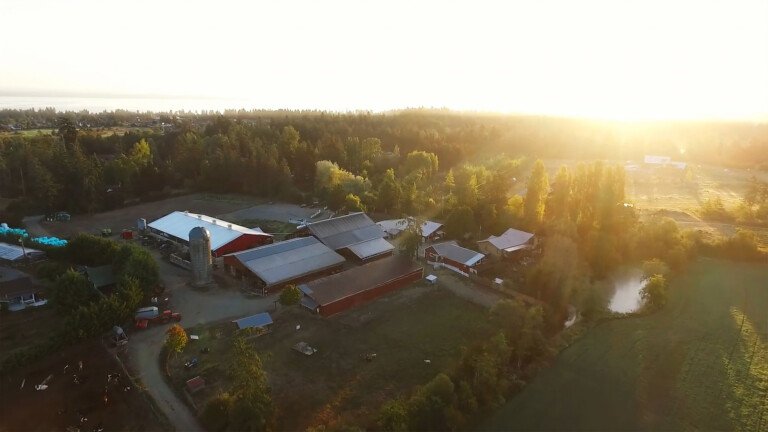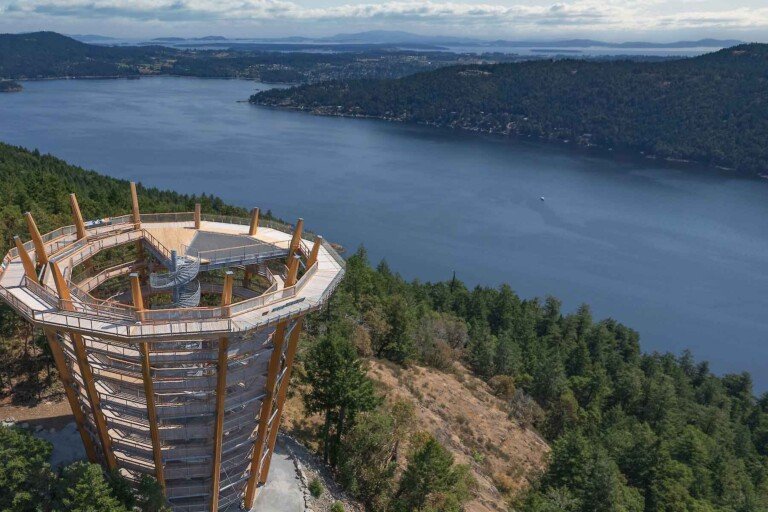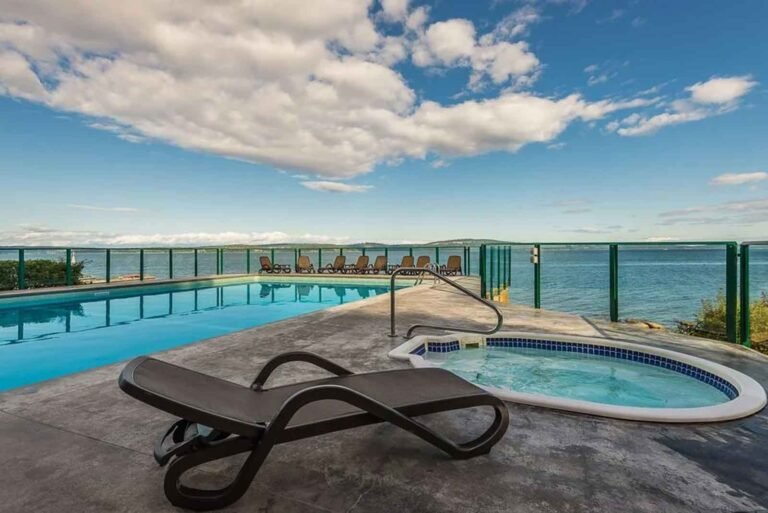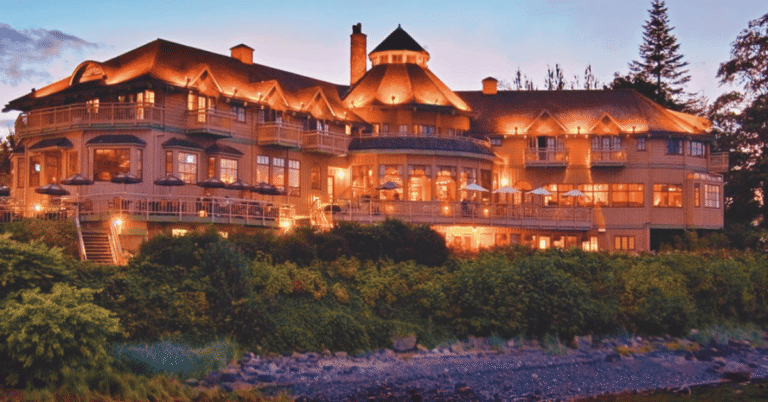Mount Assiniboine Park is a vast expanse of untamed natural wilderness situated on the spine of the Rocky Mountains between British Columbia and Alberta. This massive park encompasses a rugged, but picturesque landscape that symbolizes the beauty of the Rocky Mountains. Mount Assiniboine Provincial Park is also a World Heritage site protecting breathtaking snow-capped peaks, shimmering mountain lakes, glistening glaciers and sun-dappled alpine meadows.
No roads penetrate this unspoiled wilderness, with trails providing the only land access. Camping, hiking, mountain climbing and viewing spectacular mountain scenery are the main activities here, as well as fishing, horseback riding, and ski touring in winter. The park is roughly triangular in shape, with the apex of the park sharing its boundaries with two other parks – Kootenay National Park in the west and Banff National Park in the east. In the south, the park is bounded roughly by the Daer and Extension Creeks. The entire park sits above 1,500m, with several peaks exceeding 2,700m including Mount Assiniboine, Mount Magog, Mount Sturdee, The Marshall and Lunette Peak, which are all 3,100m or higher! The park’s centrepiece, Mount Assiniboine, towers above the park at 3,618m and bears a striking resemblance to the world famous Matterhorn in Switzerland.
Long before the likes of Alexander Mackenzie and other European explorers, the Rocky Mountain area was inhabited by many native tribes. One of these tribes, the Assiniboine, frequently used the area around a massive craggy peak to hunt. Then in the mid 1880s, G.M. Dawson pioneered the area and named this craggy mountain in honour of the Assiniboine Indians. In 1922, British Columbia set aside 5,120 hectares to create Mount Assiniboine Provincial Park, the seventh park to be created. Later in 1973, the park was increased seven-fold to its present size of 38,600 hectares.
While much of the park lies above the treeline, thick boreal forests of spruce intermixed with alpine fir and lodgepole pine blanket the lower elevations. At the higher elevations between 2,100m and 2,400m, stands of alpine larch, alpine fir and Engelmann spruce are found, with a ground cover of red and white heather and grouseberries. Willows and birch surround the park’s streams and wetter areas. In the open areas, scattered patches of false azalea, buffalo berries, twinberries, white rhododendrons and red elder flourish. Rocky slopes and ridges are covered by stonecrop, white flowering mountain avens, moss campion, cinquefoil, arctic willows and several species of saxifrage. Alpine meadows become mosaics of vivid colours from western anemones, alpine arnica, columbine, Indian paintbrush, spring beauty, alpine fleabane, mountain daisies and hundreds of other species of wildflowers during the midsummer bloom.
Wildlife in the park is just as diverse as its plantlife. The big mammals that attracted Assiniboine Indians in the past can still be found today including Rocky Mountain elk, black and grizzly bears, mule deer, moose, mountain goats and bighorn sheep. Other common wildlife includes Columbian and mantled ground squirrels, chipmunks, hoary marmots and pikas. Wolverines, wolves, badgers, martens and coyotes also inhabit the park, but are much more recluse. To date, 93 species of birds have been recorded. The most common are northern harriers, gray jays, Clark’s nutcrackers, white-tailed ptarmigans, pine grosbeaks, rosy finches, pine siskins, boreal chickadees, chipping sparrows and white-crowned sparrows.
The park offers a variety of recreational activities, however most are strenuous in nature as this is a rugged wilderness area. Wilderness hiking is very popular here ranging from single day to multi-day expedition. Fishing is possible in some of the lakes, but unpredictable. Rock Isle, Larix and Grizzly Lakes are closed to fishing. Mountain biking is permitted, as well as horseback riding, but only in certain areas. In the winter, cross-country skiing and guided ski tours are popular.
There are wilderness campsites at this park. Lake Magog in the core area, Porcupine Camp near Citadel Pass, Mitchell Meadows, Rock Isle Lake and Simpson River. To reserve the Hind Hut and Naiset Huts contact Mount Assiniboine Lodge. Reservations for the Naiset Cabins are recommended in the summer and are mandatory in the winter. For campers who wish to stay at these huts on a first-come, first-served basis, we recommend you bring a tent in case they are full. Police Meadows and Surprise Cabins are not available for public use during the fall hunting season. Visitors are reminded that this park is a true wilderness area, without supplies or equipment of any kind. All arrangements for supplies and transportation must be made beforehand.
Weather conditions are typical of the Rocky Mountains. Snow covers the mountain peaks year-round and remains at lower elevations until early summer. Daytime temperatures in July, August and early September can be warm, but nights are cool and occasionally dip below freezing. Visitors must be prepared for outdoor living by being fully self-contained and practice ‘no trace’ camping.
The park is located 48km south of Banff and 50km northeast of Radium Hot Springs on the British Columbia-Albert border. To get into this park you have to take one of four major hiking-access trails. Two of them originate in British Columbia. Most hikers take the Lake Magog Trail (strenuous) from Highway 93 in Kootenay National Park. This trailhead is located at the junction of the Vermilion and Simpson Rivers.
Visitors are strongly advised to pick up a park brochure before going into the park. Once you’re in the park, there are a number of trails to choose from, ranging in difficulty from easy to strenuous. There are also several undeveloped route that lead to some of the most scenic alpine cabin shelters, a group-camping area plus other backcountry tent sites, climbing shelters, and ranger stations are available.
Anyone who travels here is awed by the powers that mould such dishevelled landscapes; mountains. glaciers, more mountains, braided streams, canyons, waterfalls and peaks of naked rock crudely chiselled against a cold blue sky.
Nearby Regions & Towns
Park Notices






